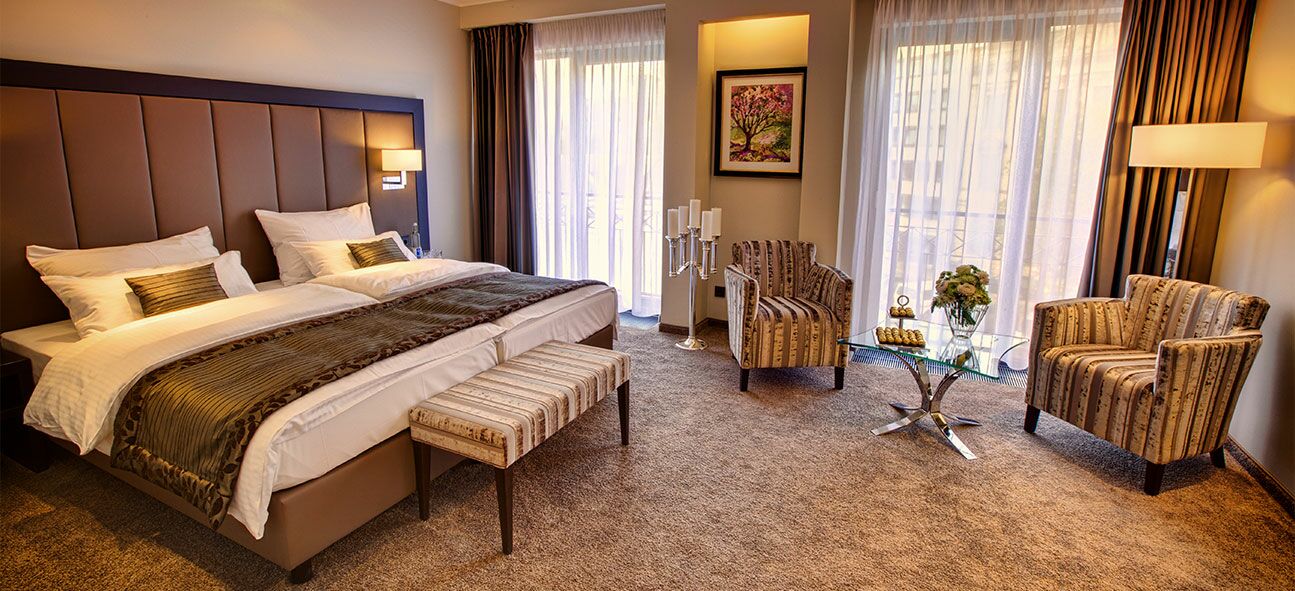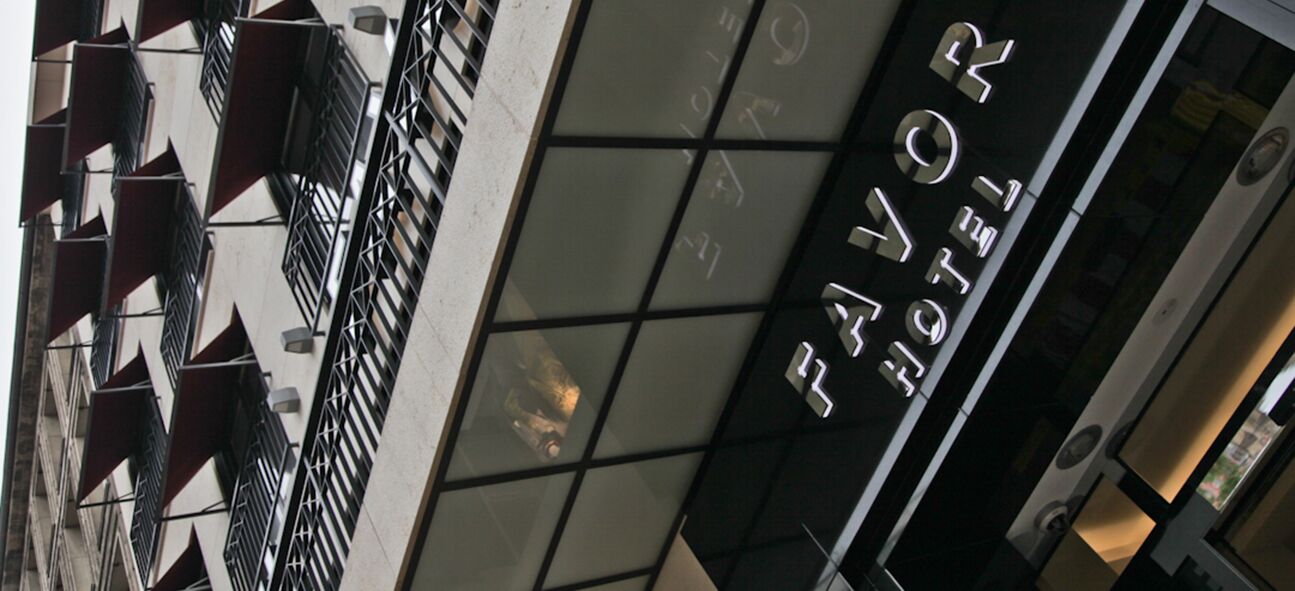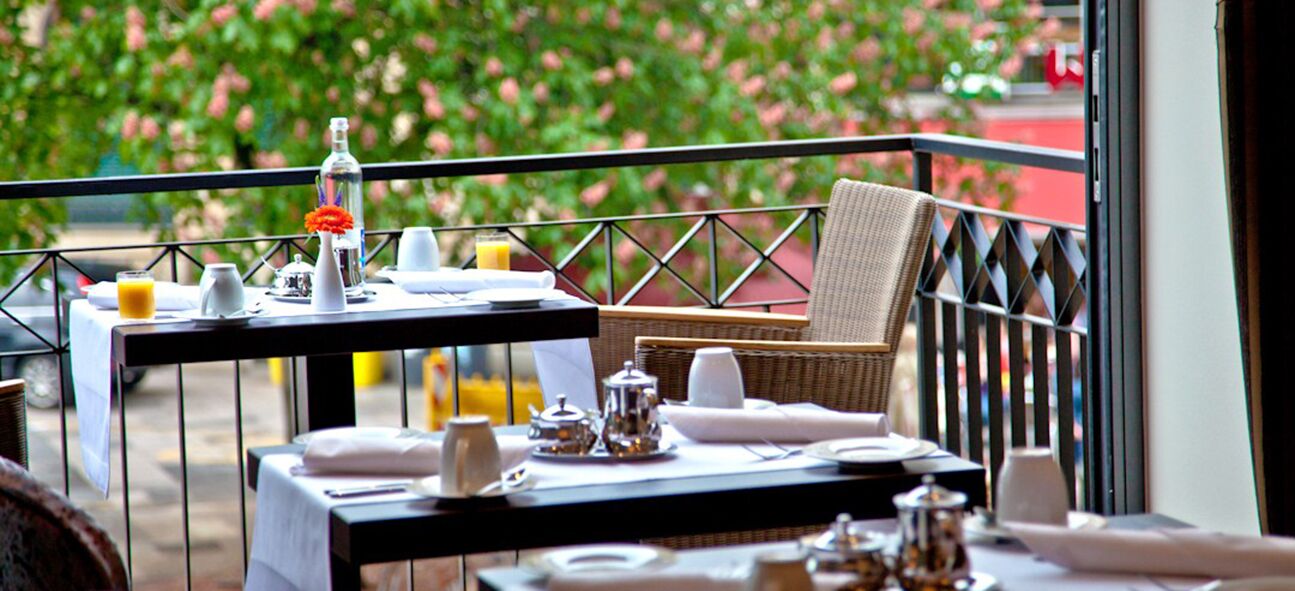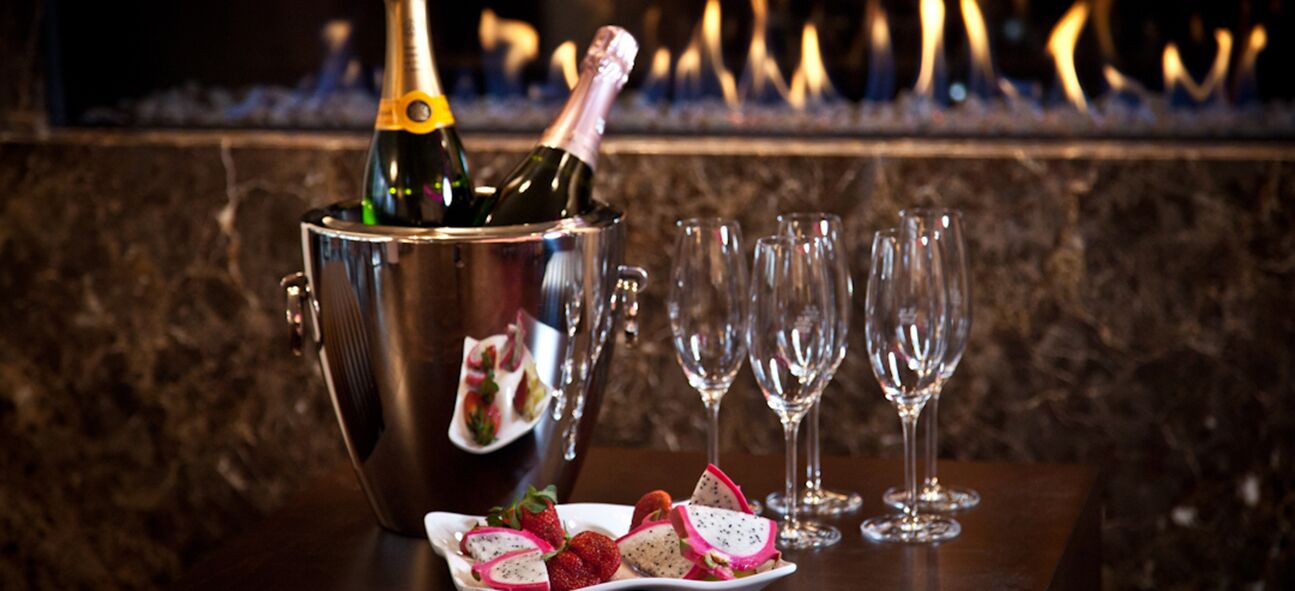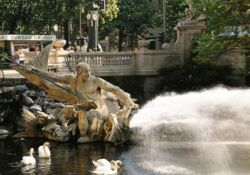Местоположение
Отель “Favor” подкупает своим удобнейшим расположением в самом центре Дюссельдорфа. Всемирно известная торговая миля Королевская Аллея проходит у дверей отеля. Отсюда вы сможете пешком дойти до первоклассных ресторанов, музеев, театров и очаровательного старого города с его знаменитыми пивными и шикарной набережной реки Рейн. Прекрасный парк Хоффгартен (Hoffgarten) c озером и лебедями, начинается от наших дверей.
Краткий обзор...
| Königsalle | около 0,0 км | Promenade along the river Rhine | около 0,8 км |
|---|---|---|---|
| Hofgarten | около 0,0 км | Main station | около 0,9 км |
| Theatre | около 0,1 км | Motorway (A52/A57) | около 2,5 км |
| Old Town | около 0,1 км | Trade fair site | около 2,8 км |
| Opera house | около 0,1 км | Düsseldorf Airport | около 8,5 км |
Düsseldorf in half a day
You have little time to spare but would like to see as much as possible? The following tour will lead you to the major highlights in just one hour. In order to help you find your way, the tour is marked on the city centre map in our city guide. Or ask the Tourist Information Offices about the exciting free-of-charge pedestrian rally for adults.
Königsallee
Start at the entrance of the Kö-Galerie and stroll along the exclusive shops. Allow yourself to be captivated by the atmosphere of the magnificent boulevard. Following the historic incident when a piece of horse dung was thrown at King Friedrich Wilhelm IV in 1848, the street that was originally called Kastanienallee (chestnut avenue) was renamed Königsallee (king’s avenue) in 1851 as a gesture of compensation. At the end of the ‘Kö’ moat, where it meets Schadowstraße, is the Triton fountain, the Kö’s landmark – a place worth lingering a while. From here, you have a beautiful view of the whole moat and the Kaufhof building opposite, which was one of Germany’s first department stores in the beginning of the 20th century (architect: Josef Maria Olbrich).
At the corner, you will find ‘Slim Matilda’, the clock that has been one of the city’s most popular meeting points for generations. Heading for theAltstadt, you have to cross Heinrich-Heine-Allee. To the left is Germany’s earliest high-rise office building, Wilhelm-Marx-House (1922-24). A detour into its idyllic inner courtyard (Stadtbrückchen) is worthwhile, if only for the nice cafés. Incidentally, Carsch-Haus department store, designed by the art-nouveau architect Otto Engler, was at one time is mantled for the construction of the Underground and then rebuilt 23 metres further back.
Altstadt (Old Town)
Continue on Flingerstraße and turn right into Hunsrückenstraße after the Carsch-Haus. At its end is St. Andreas, one of the Rhineland’s most beautiful baroque churches, which deserves a short visit. Bolkerstraße: here is the birthplace of the poet Heinrich-Heine, the city’s most famous son, who became world-famous for the Loreley song. On the other side is the Protestant Neander church whose construction had to be sanctioned by the Elector Jan Wellem.
At 11:00, 13:00, 15:00, 18:00 and 21:00 o'clock, the chimes on Schneider-Wibbel-Gasse merit a short detour. Proceed to Marktplatz with the Rathaus (city hall) at the end of Bolkerstraße. High on his horse, the Elector Jan Wellem looks down upon the square. His monument is not only Düsseldorf’s landmark, but also one of the most important baroque equestrian statues north of the Alps. Now you are just a few steps away from the River Rhine.
Burgplatz / Rhine embankment promenade
Burgplatz, the square with the cart wheeler fountain under plane trees, is where Düsseldorf’s heart beats. Here the little river Düssel, which gave the town its name, flows into the Rhine. In the background is the former collegiate church St. Lambertus with the
shrine of St. Apolinaris. Next to the bridge over the Düssel, the monument to Düsseldorf being granted the privileges of a town demonstrates impressively more than 700 years of town history (town status granted in 1288). The square is dominated by Schlossturm, the old palace tower (now navigation museum) and last testimony to the princely palace from the 13th century that fell victim to flames in 1872.
Welcome to Father Rhine, Western Europe’s most important river! The generously proportioned Rhine embankment promenade is considered one of the most beautiful on the Rhine. Upriver the MedienHafen is characterised by outstanding architectural creations, the elegant district of Oberkassel on the opposite bank by art-nouveau facades. Stroll along the wave-like pavement, especially designed for the Rhine embankment promenade, past the historic water gauge and the restored old harbour basin, and leave the Rhine at Schulstraße.
Carlstadt
Carlstadt is the city’s exquisite quarter of galleries and antique shops. Past the Filmmuseum and the Hetjens-Museum/German museum of ceramics proceed to another architectural gem: Citadellstraße with its elegant stately residences from the 18th and 19th centuries and the flair of its streets almost unchanged since these days, seems to have escaped the passing of time.
A more profound insight into Düsseldorf’s history can be gained at the Stadtmuseum at the corner of Bäcker-/Bergerstraße. Its cosy garden is treated as an insider tip. Along the romantic Bäckerstraße, Orangeriestraße and Benrather Straße you will reach Carlsplatz and its lively food market open from Monday to Saturday. From here, take the attractive Bilker Straße for a visit to theHeinrich-Heine-Institute or proceed past the former residence of Robert and Clara Schumann to Bastionstraße, a must for every lover of antiques.
Königsallee
Straight on from here you will reach the ‘Kö’ again. Design enthusiasts are recommended a visit to the Stilwerk on Grünstraße, the department store for exclusive design.

